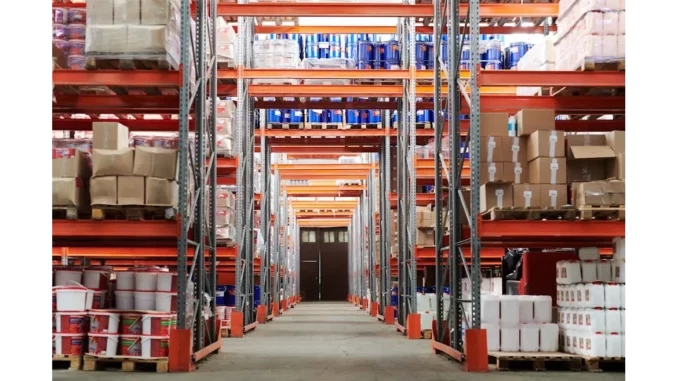
Summary
Digital Innovations Reshape Warehousing: A Glimpse into 2025
The warehousing industry is on the brink of a major transformation, spurred by the integration of cutting-edge digital technologies and shifting market dynamics. The “Warehouse Market Report 2025” delves into the pivotal trends and innovations that are redefining global warehousing, highlighting the industry’s efforts to harness technology for enhanced efficiency, sustainability, and competitiveness. As stakeholders navigate the challenges and opportunities of the digital era, technology adoption becomes essential for maintaining a competitive edge.
Main Article
The warehousing sector is experiencing a seismic shift, driven by the convergence of digital innovations. This transformation is not just about adopting new technologies but about reimagining operations to meet evolving market demands. The “Warehouse Market Report 2025” outlines how technologies like blockchain, the Internet of Things (IoT), augmented reality (AR), data analytics, and robotics are revolutionising the industry.
Advanced Technologies Revolutionise Operations
Blockchain technology is emerging as a game-changer by enhancing transparency and accountability across the supply chain. By providing an immutable ledger of transactions, blockchain mitigates fraud and ensures regulatory compliance. Meanwhile, IoT solutions are enabling real-time monitoring of warehouse conditions, optimising inventory management, and enhancing process transparency. As Leo Thompson, a logistics expert, notes, “The integration of IoT in warehousing is akin to having a digital nervous system that keeps operations humming smoothly.”
Augmented reality (AR) is also gaining traction as a transformative tool. By overlaying digital information onto the physical world, AR streamlines the picking process, enhances employee training, and simplifies warehouse expansion planning. Immersive technologies like virtual reality (VR) offer safe and controlled environments for employee training, further boosting operational efficiency.
Data-Driven Decision Making
Data analytics is at the heart of the digital transformation in warehousing. By analysing vast datasets, operators can identify trends, forecast demand, and optimise resource utilisation. Predictive modelling is being used to anticipate inventory needs, reduce waste, and improve overall efficiency. This data-driven approach allows businesses to stay agile and responsive to market changes.
Robotics systems are also playing a pivotal role in automating labour-intensive tasks. Autonomous mobile robots, cobots, and drones are deployed for inventory picking, palletising, and inspection tasks, reducing the need for manual labour while enhancing safety and accuracy. The deployment of these technologies is crucial in addressing labour shortages and rising operational costs.
Emergence of Digital Inventory
3D printing is another disruptive force, enabling the creation of digital inventory. By producing items on-demand, 3D printing reduces lead times, minimises waste, and offers greater flexibility in inventory management. This technology is particularly valuable for industries with complex supply chains and customised product requirements.
Drones are proving invaluable for enhancing warehouse security and improving inventory management. Equipped with cameras and sensors, drones can perform aerial surveillance, monitor inventory levels, and detect potential security threats. This technology provides a cost-effective and efficient solution for maintaining the safety of valuable assets within warehouses.
Focus on Sustainability
With environmental concerns gaining prominence, the warehousing industry is increasingly prioritising sustainability. The adoption of energy-efficient systems, eco-friendly materials, and sustainable processes is driving the transition towards green warehousing. By aligning with global sustainability goals, warehouse operators can reduce their carbon footprints and gain a competitive advantage. According to Emily Green, a sustainability consultant, “Green warehousing is not just an option; it’s a strategic imperative for the future.”
Navigating Challenges
Despite these opportunities, the industry faces several challenges, including rising operational costs, complex supply chains, and the need for skilled labour. To stay ahead, stakeholders must invest in technology, workforce training, and sustainable practices. These strategic imperatives will be crucial in navigating the complexities of the digital age.
Detailed Analysis
The warehousing industry’s embrace of digital transformation reflects broader economic and technological trends. As global supply chains become more interconnected, the need for transparency and efficiency is paramount. Blockchain and IoT technologies are not only enhancing operations but also addressing growing consumer demand for transparency and speed.
Furthermore, the focus on sustainability aligns with global efforts to combat climate change. Warehousing, a traditionally resource-intensive sector, is increasingly adopting green practices to reduce its environmental impact. This shift is reflective of a larger trend across industries, where sustainability is becoming integral to business strategy.
The rise of automation and robotics is also indicative of a broader move towards Industry 4.0. As labour markets tighten, automation offers a solution to rising costs and labour shortages. The deployment of these technologies in warehousing is a microcosm of the larger industrial automation trend.
Further Development
As digital transformation continues to unfold, the warehousing industry is poised for further innovations. The evolution of technologies like AI and machine learning could lead to even more sophisticated predictive analytics and automation solutions. Additionally, the integration of renewable energy sources into warehouse operations is likely to gain momentum, further enhancing sustainability efforts.
Stakeholders should anticipate regulatory developments as governments seek to address the implications of new technologies. The balance between innovation and regulation will be critical in shaping the industry’s future landscape.
Readers are encouraged to stay tuned for ongoing coverage as these trends evolve, shaping the future of warehousing and impacting broader economic and technological landscapes.

